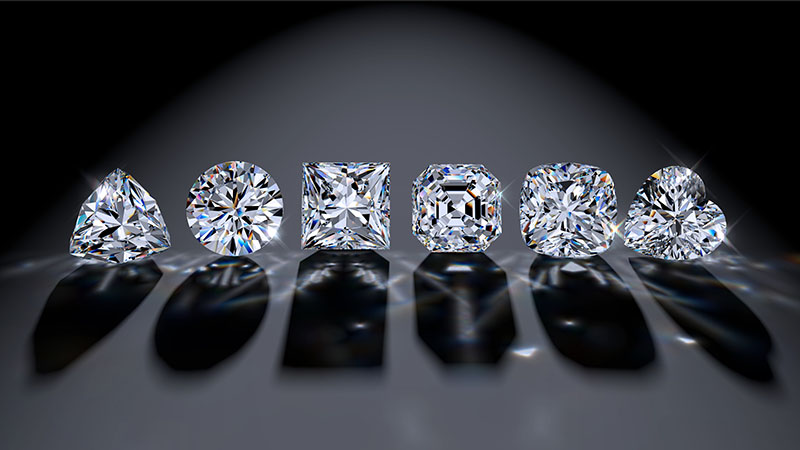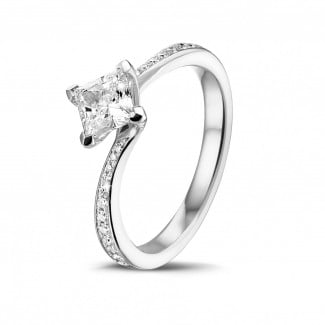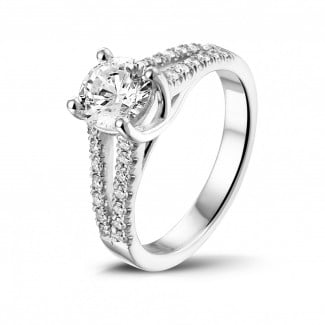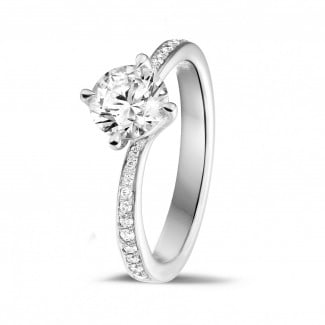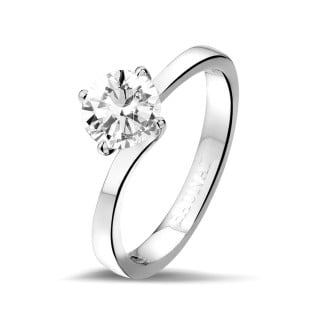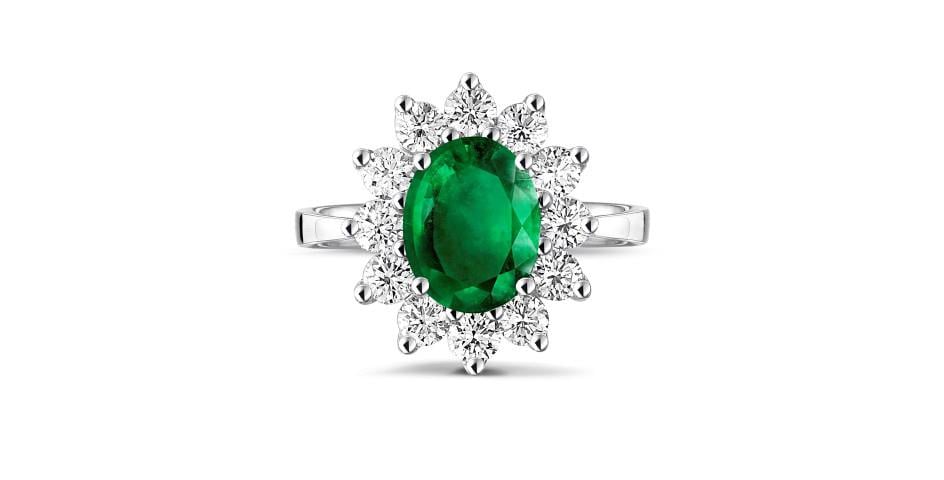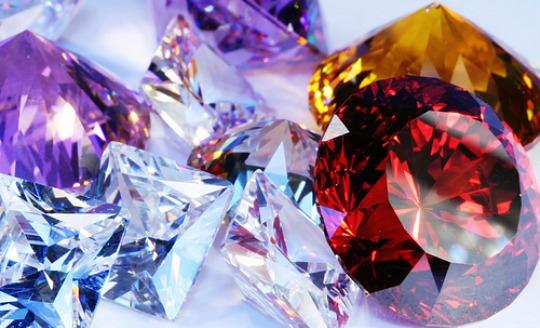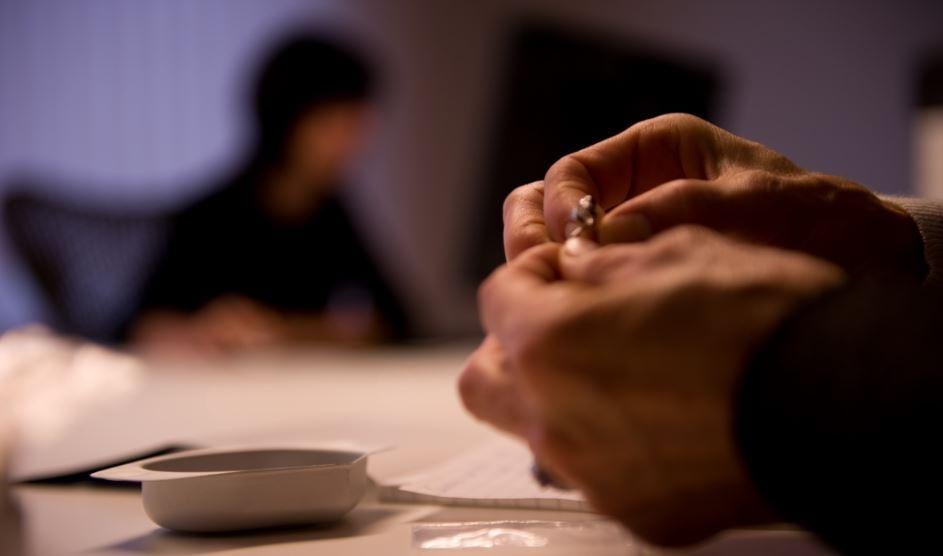Inspirational insights
Blogs in the spotlight
- How do I buy the perfect diamond ring?
- Choosing the perfect wedding ring
- Buying an engagement ring: expert tips & tricks
- Which earrings are the right ones for you?
- How to choose the perfect diamond bracelet?
- How to choose a necklace for ladies?
- Take your time in choosing your watch
- What's the right jewellery for each occasion?
- Why buy diamond jewellery online?
- A guide to building up your jewellery collection
- What types of precious metals are there?
- What types of precious metals are there?
- Jewellery trends and innovations in 2020
- What sorts of diamond setting are there?
Diamonds have been adored for centuries, even in their natural, rough state. The hardest material in the world holds immense appeal. Their increasing scarcity render them a very smart investment too. But which diamond shape will ensure your diamond truly comes into its own? We have compiled a comprehensive guide of all the diamond shapes and their unique attributes.
- The history of diamond cutting
- The various diamond shapes
- The cutting process, cut quality and diamond cut differences explained
- The quality of the diamond shape
- The ratio of the diamond shape
- The symmetry of the diamond shape
- What other factors determine diamond quality and value?
- The diamond cutting process
Most viewed diamond jewels
The history of diamond cutting
The oldest reference to diamond may derive from India, but diamond cutting was pioneered in Europe. A diamond cutting guild was established in Nürnberg, Germany in 1357. These diamond cutters concentrated on cut specifications, on how a rough gemstone was to be cut. The first to be cut was the table of the diamond, to consequently be set into jewellery pieces.
But, the real forefathers of beautifully cut diamonds as we know and love them today, were the Belgians. In 1456 Bruges-based, Lodewijk van Bercken, kickstarted the modern-day diamond cutting process. He discovered that diamonds are best cut using their owndiamond dust. You see, other materials simply aren’t capable of cutting the hardest material in the world.
As such, Bruges became the diamond capital of the world, until port trade in the 16th century superseded it. After this, Antwerp became the diamond capital. To this day the city upholds its global reputation with pride. In the 17th century, one of its inhabitants, Marcel Tolkowsky, made the city worthy of its name: he devised a scientific formula to be the firstto cut a diamond in 58 facets, known today as the round brilliant cut .
The various diamond shapes
New diamond shapes are continually being devised. The most popular diamond shapes are:
- The brilliant
- The round cut
- The princess cut.

The brilliant
If you can picture your beloved pulling out a gold ring with a brilliant when popping the question, then your style is timeless and elegant with a traditional twist.

The princess cut
Diamond cutters are rather keen on this diamond cut, as a staggering 80-90% of the gemstone can be retained. That’s a significant amount, given that on average with other cuts retention equates to around 50%.
This diamond cut is ideal for women who like a touch of the traditional in their jewellery, whilst looking to attain a modern, distinctive style.

The emerald cut
The square diamond shape has rounded corners, and a rounded pavilion, by contrast to the sharper angles of the princess cut. The shape is also known as the ‘step cut’ because the large open facets bring to mind stair treads.
This diamond cut is ideal for women who love glamour in their lives, and who would call themselves daring. This diamond is also popular as it has a vintageappearance, with a nod to the Art Deco style of the 1920s and 30s.

The heart shape
The heart shape is sometimes compared to two pear-shaped diamonds. The heart’s two curves have to be cut in perfect symmetry in order to create scintillation. A skill that only the most experienced cutters have mastered.
The shape makes for a superromantic proposal. If your partner loves a touch of romance and is driven by her emotions in your relationship, give her a heart-shaped engagement ring.

The Asscher cut
This shape was particularly popular in the 1920s, making it the perfect choice for women who love a touch of Art Deco in their jewellery, but who also wish to draw attention to a diamond cut that is a little rarer nowadays.

The cushion cut
The cushion cut diamond exudes regalelegance. Many Hollywood stars have been proposed to with a cushion cut diamond engagement ring. This cut is perfect for women who adore the well-groomed, gracious look.

The radiant cut
To ensure all attributes come fully to the fore, diamonds are designated a colour rating of H, G or higher. The scintillation emphasises the colour and clarity, so you’ll need a qualitative gemstone as the centrepiece. Coloured diamonds are also eminently suitable to be cut into a radiant.
This shape is perfect for women who like toflaunt scintillating jewellery, and who are self-assured and vivacious.

The oval cut
The oval cut on a diamond ring is perfect for women with small hands. Its long shape and scintillation help make the fingers appear longer. The symmetrical gemstone expresses the wearer’s creative and innovative character.

The marquise
Women who wear a marquise cut ring are elegant and social. Moreover, its shape slims the fingers.

The pear-shaped diamond
According to the diamond trade, the pointed end must point towards the fingertips. In this way you can make your fingers seem longer and thinner. The pear-shaped diamond looks stunning in a pendant or pair of earrings, when the tear ‘hangs’ (so is attached to the chain at the pointed end).
This diamond shape is popular among women who aren’t looking for a run of the mill diamond, who like to do their own spontaneous thing. This shape is also hugely popular set in a pair of earrings, as they suit all face shapes.

The cabochon
Cabochons are often used with coloured gemstones as the technique emphasises the colour. But the cabochon shape is also frequently used with fragile gemstones as this is safer for the stone itself.
A cabochon is easy to combine with a range of jewellery, and can create both a designer or vintage look.

The baguette
In particular, this cut emphasises the diamond’s clarity over its scintillation. This is why it is often used for side stones rather than a solitaire, central diamond.

The trilliant
The sides of the diamond are often a little rounded in order to create a softer look. The trilliant is hardly ever used as a solitaire diamond, rather more as a side stone.
The cutting process, cut quality and diamond shape differences explained
The cutting process or cut is extremely important with an exclusive solitaire ring, where a single diamond forms the centrepiece. The diamond must be cut to a high calibre to ensure optimum scintillation. The cutting process actually entails 3 concepts that cutters must be mindful of: optimal size (with minimal carat loss as possible), perfect symmetry and good polishing.
The cut quality is then remeasured based on three factors that must be perfectly attuned, in order to ensure that as much light is allowed through as possible. We explain the 3 elements here for you:
- Brilliance: the reflection of the white light on the surface as well as in the diamond.
- Fire: the flashes of colour caused by the light refracting in the diamond.
- Scintillation: light and dark flashes when the diamond moves.

The quality of the diamond shape
anti-vibration technology and extremely high magnification. The experts are looking to accurately determine the classification and potential value.
Both the cut and the characteristics and qualitative attributes of the stones are summarised on the accompanying certificate. It is an impartial evaluation that ensures procurement of diamonds and diamond jewellery in good faith. It states the value as transparently as possible. To this end, standard terminology is used. To help you understand your certificate better, we have started by explaining thecut qualitygrading of the diamond.
- Triple Excellent: reflects the maximum amount of light
- Excellent: reflects nearly all the light falling on the diamond
- Very Good: reflects about just as much light as one with an ideal cut quality, but is cheaper
- Good: reflects sufficient light
- Fair: a reasonable diamond
- Poor: reflects a small amount of light
The ratio of the diamond shape
Some diamond shapes have ratio guidelines. For example, the standard ratio for a marquise will lie between the 1.70:1 (a ‘wide’ marquise) and 2.50:1 (a ‘long and thin’ marquise). A cushion cut diamond starts at 1.15:1 for the square design and an emerald lies between the 1.25:1 and 1.5:1. Despite this, the perfect ratio and diamond do not exist. Meaning you are always able to state your preference and personal wishes. The only caveat is the diamond must be cut well, focusing on light absorption and scintillation.

The symmetry of the diamond shape
A culet is the point at the base of a gemstone, that is either polished or not, to create an extra facet. Vital is that this is cut by a craftsman as this will ensure the degree of light to be let through. A culet is often cut into a point, to make the diamond sturdier.
The importance of symmetry in terms of a diamond’s value varies in line with its style and cut. With a heart or pear-shaped cut it is trickier to attain a fully symmetrical cut.
- Poor (substandard) : blemishes discernible with the naked eye.
- Fair (acceptable) : blemishes are discernible with a 10x magnifier and sometimes with the naked eye.
- Good (good) : blemishes hardly discernible with a 10x magnifier.
- Very good (very good) : blemishes are really hard to discern with a 10x magnifier.
- Excellent (perfect) : no discernible blemishes with a 10x magnifier.
A brilliant graded as ‘excellent’ can potentially be 15% more valuable than one a category below it. Symmetry is vitally important with round diamonds with a clarity of VVS2 upwards. Discernible blemishes would tarnish the clarity of a pure gemstone. Besides its higher value, a symmetrical diamond reflects light better. That yields an opulent look&feel to your ring or your diamond studs.
What other factors determine diamond quality and value?
As the cutting substantially impacts value, it is crucial to leave this to the experts. As such, a slightly less valuable diamond, such as an impure yellow-coloured stone, can still scintillate despite a modified shape. In turn, a poorly cut pure and colourless diamond, will drop considerably in value.

The diamond cutting process
The more facets that are cut, the more light that can shine through the gemstone, so the more it scintillates.

Planning
The initial planning stage is the most time-intensive. The preparation phase can sometimes last up to a year, before even a single change is made to the rough gemstone. That process begins by examining the internal attributes.
Cleaving and sawing
Ideally, a diamond on a ring should have as few flaws as possible to increase the value of the ring. These flaws could also mean the gemstone crumbles during the final cutting process. This is why these weaker points are identified and removed as much as possible from a rough diamond. Furthermore, the purpose of cleaving is also to retain as many diamond carats from the rough gemstone as possible.
Girdling and bruting


Kim Wouters
- BAUNAT Antwerp
- My Linkedin profile - Contact me
 Design collections
Design collections Stackable Rings
Stackable Rings Ruby, sapphire & emerald
Ruby, sapphire & emerald Bestsellers
Bestsellers New arrivals
New arrivals Watches
Watches Cufflinks
Cufflinks Rings for men
Rings for men Diamond
Diamond Sapphire
Sapphire Ruby
Ruby Emerald
Emerald Yellow diamond
Yellow diamond Black diamond
Black diamond
 Diamond rings
Diamond rings Sapphire rings
Sapphire rings Ruby rings
Ruby rings Emerald rings
Emerald rings Yellow diamond rings
Yellow diamond rings Black diamond rings
Black diamond rings
 Stackable rings
Stackable rings Cocktail rings
Cocktail rings Rings for men
Rings for men Bestsellers
Bestsellers Diamond rings
Diamond rings Sapphire rings
Sapphire rings Ruby rings
Ruby rings Emerald rings
Emerald rings Yellow diamond rings
Yellow diamond rings Black diamond rings
Black diamond rings
 Solitaire
Solitaire Dangle
Dangle Diamond earrings
Diamond earrings Sapphire earrings
Sapphire earrings Yellow diamond earrings
Yellow diamond earrings Black diamond earrings
Black diamond earrings
 Solitaire
Solitaire 3 stones
3 stones Halo
Halo Gradient
Gradient Diamond necklaces
Diamond necklaces Sapphire necklaces
Sapphire necklaces Yellow diamond necklaces
Yellow diamond necklaces Black diamond necklaces
Black diamond necklaces
 Gradient
Gradient White gold
White gold Yellow gold
Yellow gold Red gold
Red gold Platinum
Platinum Diamond bracelets
Diamond bracelets Yellow diamond bracelets
Yellow diamond bracelets Black diamond bracelets
Black diamond bracelets
 View watches
View watches View watches
View watches Swiss Made
Swiss Made Swiss Collection limited edition
Swiss Collection limited edition Manufacturing process
Manufacturing process Manual or Automatic watch
Manual or Automatic watch Sapphire or mineral glass
Sapphire or mineral glass
 Rings
Rings Necklaces
Necklaces Bracelets
Bracelets Sapphire
Sapphire
 Engagement rings
Engagement rings Earrings
Earrings Necklaces
Necklaces Bracelets
Bracelets
